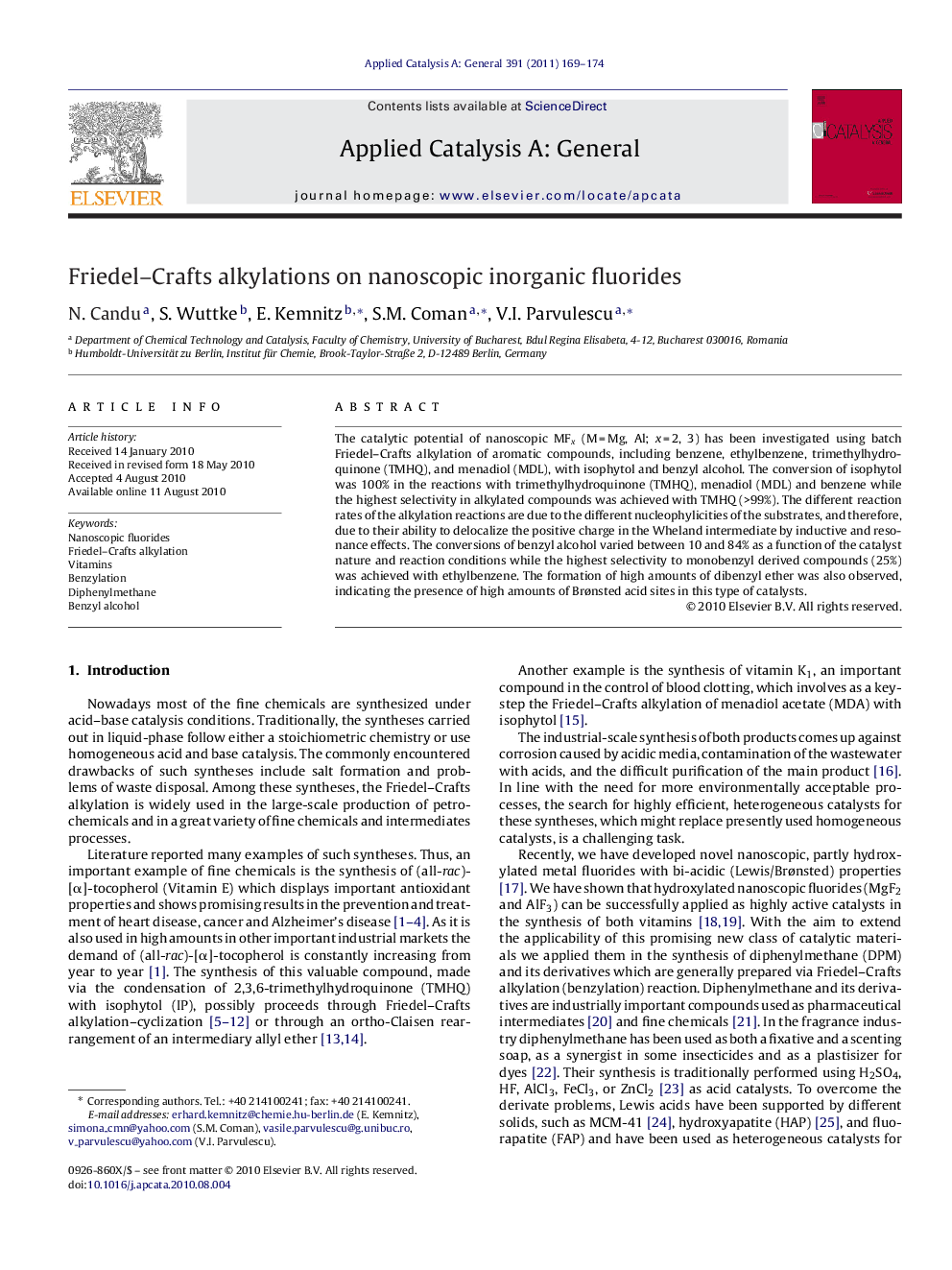| کد مقاله | کد نشریه | سال انتشار | مقاله انگلیسی | نسخه تمام متن |
|---|---|---|---|---|
| 41635 | 45895 | 2011 | 6 صفحه PDF | دانلود رایگان |

The catalytic potential of nanoscopic MFx (M = Mg, Al; x = 2, 3) has been investigated using batch Friedel–Crafts alkylation of aromatic compounds, including benzene, ethylbenzene, trimethylhydroquinone (TMHQ), and menadiol (MDL), with isophytol and benzyl alcohol. The conversion of isophytol was 100% in the reactions with trimethylhydroquinone (TMHQ), menadiol (MDL) and benzene while the highest selectivity in alkylated compounds was achieved with TMHQ (>99%). The different reaction rates of the alkylation reactions are due to the different nucleophylicities of the substrates, and therefore, due to their ability to delocalize the positive charge in the Wheland intermediate by inductive and resonance effects. The conversions of benzyl alcohol varied between 10 and 84% as a function of the catalyst nature and reaction conditions while the highest selectivity to monobenzyl derived compounds (25%) was achieved with ethylbenzene. The formation of high amounts of dibenzyl ether was also observed, indicating the presence of high amounts of Brønsted acid sites in this type of catalysts.
The catalytic potential of nanoscopic MFx (M = Mg, Al; x = 2, 3) has been investigated using batch Friedel–Crafts alkylation of aromatic compounds, including benzene, ethylbenzene, trimethylhydroquinone (TMHQ), and menadiol (MDL), with isophytol and benzyl alcohol. An optimal combination of the catalyst nature, the substrate and alkylating agent reactivities is essential for the successful application of the reaction.Figure optionsDownload high-quality image (63 K)Download as PowerPoint slideResearch highlights▶ The overall rate of the vitamin E synthesis is dictated by the rate of the chromane ring closure step. ▶ Acid strength has a positive influence both on the reaction rate and the selectivity to vitamin E. ▶ Increasing the density of Brřnsted sites in disfavour of the Lewis sites slowers the rate of the alkylation step. ▶ The presence of Brřnsted acid sites is essential to promote the first alkylation synthesis step, while for the general synthesis the Lewis/Brřnsted acid site ratio is a critical feature.
Journal: Applied Catalysis A: General - Volume 391, Issues 1–2, 4 January 2011, Pages 169–174